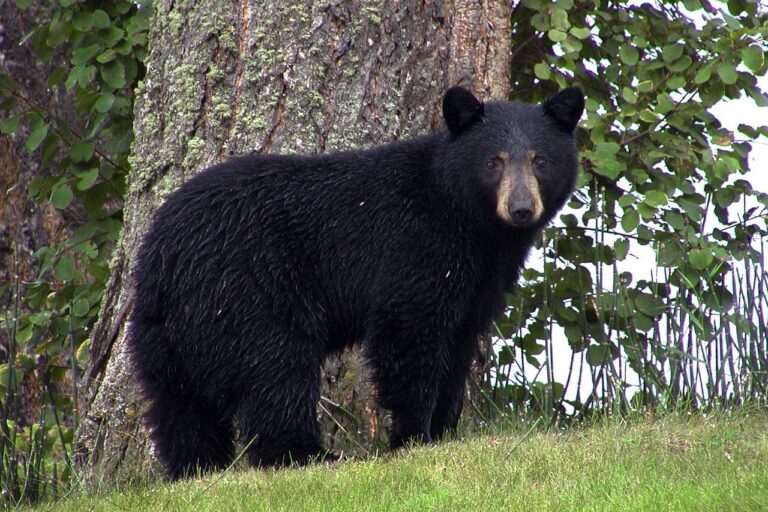By promoting sustainable tourism practices, engaging local communities, and advocating for strong legal protections, we can ensure that Alaska remains a refuge for its incredible wildlife while continuing to welcome visitors from around the world.
With its breathtaking landscapes, abundant wildlife, and unique ecosystems, Alaska is a top destination for tourists seeking natural beauty and adventure. However, the influx of tourists poses significant challenges to the delicate balance of the environment. In this article, we delve into the impacts of tourism on Alaska’s wildlife and examine the legal actions being implemented to protect these ecosystems and the lawsuits that have arisen to address environmental concerns. Understanding these dynamics can help us evaluate the efforts to ensure Alaska remains a sanctuary for wildlife while accommodating a growing tourism industry.
Alaska Tourism Growth
Tourism is a vital part of Alaska’s economy, contributing significantly to jobs and revenue. According to the Alaska Travel Association, more than two million tourists visit Alaska each year, the majority of whom visit during the summer. These visitors are drawn to the state’s national parks, glaciers, wildlife viewing, and outdoor activities such as hiking, fishing, and kayaking.
Economic benefits of tourism
Tourism in Alaska has significant economic benefits. It supports jobs in hospitality, transportation and retail, and provides tax revenue to the state. For many rural communities, tourism provides an important source of income and helps preserve local culture and traditions.
Environment issues
However, the environmental problems posed by tourism are significant. The presence of large numbers of visitors can lead to habitat destruction, pollution, and increased human-wildlife contact. These impacts can have a detrimental effect on Alaska’s diverse species, from marine mammals and birds to terrestrial animals.
Impacts on Alaska’s wildlife
The impacts of tourism on Alaska’s wildlife vary by species and region, but some common issues have emerged.
Habitat destruction
One of the main concerns is habitat destruction. Construction of tourist facilities such as hotels, lodges and trails in Alaska can fragment habitat and displace wildlife. Increased foot traffic and recreational activity can also lead to soil erosion, damage to vegetation and disturbance of nesting and feeding areas.
pollution
Tourism-related pollution (litter, wastewater, exhaust fumes from vehicles and boats, etc.) poses a threat to wildlife. Marine pollution is of particular concern and can affect fish, birds and marine mammals. In addition, noise pollution from ships and aircraft can disrupt sensitive species.
Legal measures to protect wildlife
A variety of legal measures are in place at the federal, state, and local levels to mitigate the impacts of tourism on wildlife. These laws aim to balance the needs of tourism with the need to protect Alaska’s natural heritage.
Federal Law
Several federal laws play an important role in protecting Alaska’s wildlife.
National Park Service Organic Act
 United States National Park Service logo. Image courtesy of the U.S. Government, National Park Service, via Wikimedia Commons, https://commons.wikimedia.org/
United States National Park Service logo. Image courtesy of the U.S. Government, National Park Service, via Wikimedia Commons, https://commons.wikimedia.org/
The National Park Service Organization Act of 1916 established the National Park Service (NPS) with a mandate to protect natural and cultural resources for future generations. Alaska has many national parks administered under this act, including Denali, Glacier Bay, and Katmai. The NPS regulates tourism activities within these parks to minimize environmental impacts and protect wildlife.
Marine Mammal Protection Act (MMPA)
The Marine Mammal Protection Act of 1972 aims to prevent the decline of marine mammals due to human activities. The Marine Mammal Protection Act prohibits the “taking” of marine mammals, including harassment, hunting, capturing, killing, etc., except under certain circumstances. This law is particularly relevant to Alaska, where marine mammals such as whales, seals, and sea otters are popular with tourists.
Endangered Species Act (ESA)
The Endangered Species Act of 1973 provides comprehensive protection for species at risk of extinction. Under the ESA, federal agencies must ensure that their activities do not threaten the survival of listed species or destroy critical habitat. In Alaska, this includes species such as sea lions, polar bears, and a variety of seabirds, all of which may be affected by tourism activities.
State and local regulations
In addition to federal law, Alaska has its own regulations aimed at protecting wildlife and managing tourism.
Alaska Department of Fish and Wildlife (ADF&G)
ADF&G is responsible for managing the state’s fish and wildlife resources. The agency issues regulations regarding hunting, fishing, and wildlife viewing to ensure sustainable practices. For example, ADF&G has established bear viewing guidelines to minimize disturbance and protect both bears and people.
Local regulations
Local governments in Alaska also play a role in regulating tourism and protecting wildlife. For example, some municipalities have enacted ordinances that regulate development in sensitive areas, limit the number of tour operators, and establish no-sail zones to protect marine life from vessel traffic.
Legal Disputes and Litigation
Despite the existence of strong legal frameworks, conflicts often arise between tourism and wildlife conservation. These disputes often result in litigation, with various stakeholders attempting to influence policy and enforcement.
Case Study: Cruise Ship Contamination
One prominent example is the problem of pollution from cruise ships. Alaska’s pristine waters attract many cruise ships every year, but these ships can discharge pollutants such as sewage, grey water, and harmful substances. In 2006, Alaska voters approved the Cruise Ship Initiative, which imposed stricter regulations on wastewater discharges and required the installation of environmental monitors on board ships. However, enforcement and compliance have been contentious, leading to lawsuits by environmental groups seeking to hold cruise ships accountable.
Case Study: Wildlife Observation and Disturbance
Another area of legal disputes is wildlife viewing activities. The growing popularity of bear watching, whale watching, and other wildlife tours has raised concerns about disturbance and harassment. Lawsuits have been filed challenging permits issued to tour operators, claiming they do not adequately protect wildlife. For example, in 2018, a coalition of environmental groups sued the National Park Service over plans to increase bear viewing permits in Katmai National Park, arguing that they would excessively disturb bear habitat.
Local news and legal changes
To understand the ongoing impacts of tourism on Alaska’s wildlife, it’s important to stay informed about local news and legal developments. Alaska news organizations provide valuable updates and insights about environmental issues and legal actions in the region. Following such sources allows stakeholders to stay current on developments and participate in the discussion about tourism and wildlife conservation.
Balancing tourism and wildlife conservation
Striking a balance between promoting tourism and protecting wildlife requires collaboration among many different stakeholders, including government agencies, tour operators, environmental groups and local communities.
Sustainable Tourism Practices
Promoting sustainable tourism practices is essential to minimizing tourists’ impact on the environment. This includes implementing best practices in waste management, reducing carbon emissions and educating tourists on responsible behavior. Tour operators can play a key role by adopting environmentally friendly practices and raising awareness among their customers.
Contribution to the local community
Involving local communities in tourism management and wildlife conservation is also important. Indigenous and local knowledge can provide valuable insights into sustainable practices and help foster a sense of stewardship among residents. Collaborative initiatives that involve communities in the decision-making process can lead to more effective and culturally sensitive solutions.
Adaptive Management
Adaptive management is a strategy that monitors environmental impacts and adjusts practices based on feedback and changing conditions. This approach allows for flexibility and continuous improvement in tourism management and wildlife conservation. For example, if tourism disturbance increases in a particular area, management practices can be adjusted to reduce the impacts.
Legal support and public awareness
Legal support and public awareness are essential to ensure that wildlife protection laws are enforced and tourism is sustainable. Environmental organizations play a key role in monitoring compliance, filing lawsuits when necessary, and educating the public about the importance of protecting Alaska’s natural heritage.
Conclusion
The impacts of tourism on Alaska’s wildlife are a complex, multifaceted issue that requires careful management and legal oversight. Federal, state, and local laws provide a framework for protecting wildlife, but balancing tourism with environmental protection remains a challenge. Legal disputes and litigation highlight the ongoing conflict and the need for vigilant enforcement and advocacy.
Staying informed through local news outlets like Alaska News is essential to understanding the evolving landscape of tourism and wildlife conservation in Alaska. By promoting sustainable tourism practices, partnering with local communities and advocating for strong legal protections, we can ensure Alaska remains a refuge for incredible wildlife while continuing to welcome visitors from around the world.

